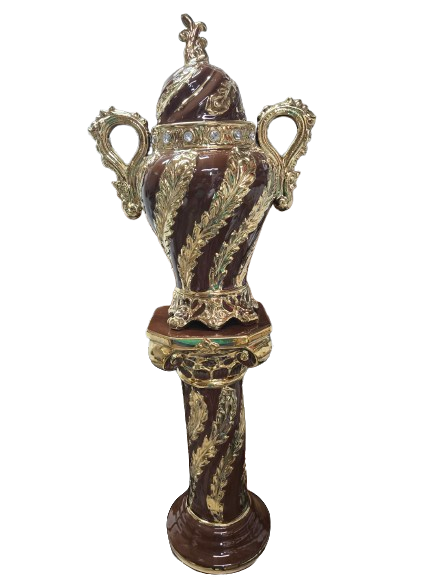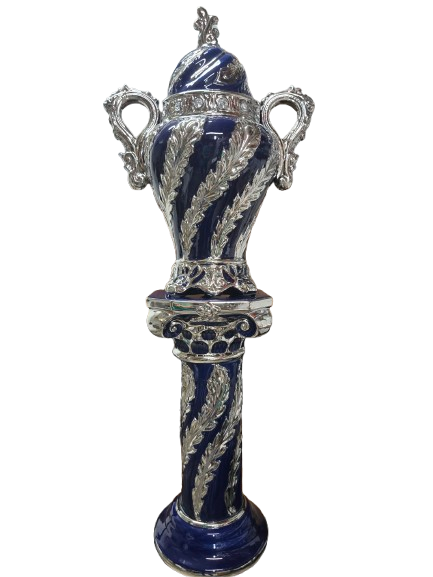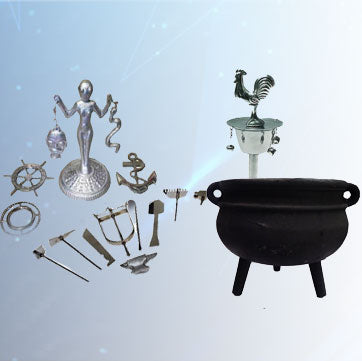Elegguá: The Guardian of Crossroads and Opportunities
Elegguá is a fascinating figure within the Yoruba religion, known as the master of the crossroads and the opener of paths. Often depicted as a mischievous deity with a child-like spirit, Elegguá is revered for his ability to influence the course of human lives. In this blog, we explore the rich cultural significance of Elegguá, his roles and attributes, and how he brings balance between chaos and opportunity.
Understanding Elegguá’s Origins and Symbolism
Elegguá is one of the Orishas in the Yoruba pantheon, a complex spiritual faith with roots in West Africa. Known for his role as a communicator between the spiritual and earthly realms, Elegguá’s presence is essential at the beginning of rituals. His striking appearance often includes keys, stones, and a red-and-black color scheme, representing his dual nature and connection to the crossroads of life. These colors hold a deep symbolism in Yoruba mythology, as Elegba is depicted carrying attributes such as keys and a staff, showcasing his role as a guide and protector.
Exploring the etymology of his name, Elegua is sometimes referred to as ‘Messenger of the Gods’ or ‘Master of Force.’ These titles emphasize his role not only as a bridge between dimensions but also as a deity of action and choice that permeates human decisions. Legends abound about his presence at the inception of creation, highlighting the fact that Elegguá was the first Orisha created by Olodumare and thus a witness to the unfolding of existence.
The Dual Nature of Elegguá: Trickster and Protector
As a trickster, Elegguá is known for his playful and mischievous behavior, often testing the resolve and integrity of those he encounters. Despite his trickster traits, he is also a guardian and protector, guiding us through life’s uncertainties. Understanding this balance is key to appreciating his role in Yoruba religion and his influence on decision-making and chance. Much like Hermes in Greek mythology, Eleguá operates at the boundaries of the known and unknown, welcoming followers at the threshold of understanding.
His duality is also expressed in stories such as the tale of the two friends who fought over the color of his hat. Elegguá, wearing a two-toned hat, walked between them, causing a quarrel about whether the hat was red or white. This narrative illustrates his nature, teaching profound lessons about perspective and understanding beyond surface-level perceptions.1
Elegguá’s Role at the Crossroads of Life
Elegguá resides at every crossroads, physical and metaphysical, guiding individuals in choosing the right path. He oversees the roads and communication channels, dictating the flow of fortune and instability. By invoking Elegguá, followers seek his guidance to make decisions and open doors that lead to new opportunities. His role at the crossroads is not only about decision-making but about transformation. At these junctions, Elegba is the linchpin in the cycle of endings and beginnings, representing both the journey and the destination.
In the Yoruba tradition, the crossroads is a sacred space where life’s greater questions are contemplated and resolved. Elegguá holds significant influence at these points and can be seen in various religious practices across the Afro-Caribbean and Latin American spheres, integrating his symbolism with local beliefs including Santeria and Candomblé.
Rituals and Offerings to Invoke Elegguá
Engaging with Elegguá involves specific rituals and offerings that demonstrate respect and invoke his favor. Items like candy, coins, and toys are commonly presented, reflecting his youthful and vibrant spirit. These offerings are made at the crossroads or specific altars designated for Elegguá to ensure alignment with personal and universal paths. Elegua is keenly venerated for opening spiritual doors, with rituals often including elements like candles and drums to communicate with him and secure his blessings.
It’s fascinating to note that Elegguá’s rituals are adaptable across various traditions, from the Afro-Cuban practices to Yoruban ceremonies. Santeria practitioners, for instance, often honor Elegguá by creating altars behind doors, symbolizing his protective role as a guardian of thresholds.
The Influence of Elegguá in Contemporary Culture
Beyond traditional practices, Elegguá’s influence extends into popular culture, with artists, musicians, and writers finding inspiration in his stories and attributes. His universal appeal lies in his representation of both challenge and opportunity, embodying themes that resonate across cultures and artistic expressions. Interestingly, these depictions of Eleguá continue to adapt and evolve, reflecting the perpetual dance between chaos and opportunity that characterizes both his essence and human experience.
Contemporary visions of Elegguá often encapsulate the dual aspects of life and decisions, very much like the changing landscape of modern life itself. To meet Elegguá in today’s world is to acknowledge the fluid, ever-changing paths we navigate in our daily lives. For those seeking tangible connections and reminders of this balance, Eleggua statues offer an embodiment of this timeless wisdom, inviting all who revere him to consider the choices that carve out our destinies.
Elegguá: The Balance Between Chaos and Opportunity
Elegguá plays a vital role in shaping destinies and facilitating choices in both the spiritual and material worlds. As the keeper of keys and roads, he reminds us of the power and responsibility we all hold when standing at life’s many crossroads. Embracing Elegguá offers a chance to understand the multidimensional paths of life and to welcome the opportunities that await us at each turn.





































Dejar un comentario